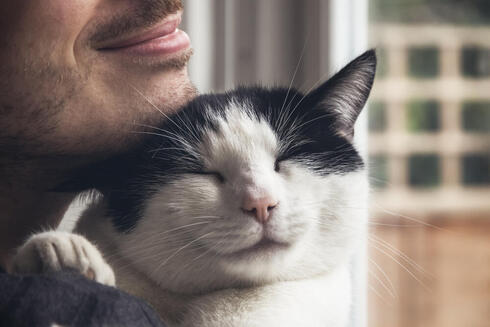To most cat lovers, the soothing sound of a purr is more than background noise—it’s a soft, rhythmic expression of trust, contentment and connection. But a new study suggests there may be something deeper behind your cat’s purring habits. In fact, the key to that comforting hum might be found in their genes.
Researchers from Kyoto University in Japan, publishing their findings in the journal PLOS ONE, have identified a link between a specific genetic variation and how frequently domestic cats purr or vocalize. The gene in question is the androgen receptor (AR), which plays a role in processing hormones like testosterone and influencing behavior.
Within this gene is a repeating DNA sequence—specifically, a stretch of code associated with the amino acid glutamine. The number of these repeats varies among individual cats. In the study, the count ranged from 15 to 22. And it turns out that number may shape not just how your cat sounds, but how it relates to you.
Studying 280 spayed or neutered mixed-breed cats from across Japan, the researchers combined behavioral questions with genetic testing. Cats with 18 or fewer repeats in the AR gene tended to purr more often. In male cats, that same lower count was also linked to greater vocal activity—more meowing, chirping, and general “talking” toward humans. In females, fewer repeats correlated with increased aggression toward strangers.
While the behavioral differences showed up differently by sex, the researchers believe they stem from a shared root: heightened responsiveness to unfamiliar situations. Males may react by vocalizing for attention or help, while females might adopt a more defensive posture.
What makes the finding even more intriguing is the evolutionary context. When researchers analyzed DNA data from 11 species of wild cats—including the leopard cat, serval, and wild ancestors of domestic cats—they found none with the long version of the gene (20–22 repeats). This suggests that longer-repeat variations likely emerged only after domestication, perhaps favored in quieter cats more suited to living indoors with humans.
And that matches trends from previous research in Japan, where purebred domestic cats—specially bred to live with humans—were found more likely to carry AR genes with a high number of repeats.
So what does this mean for your chatty tabby or aloof Persian? It reinforces the idea that the relationship between cats and humans isn’t just shaped by how we raise them—but also by how they’ve evolved alongside us. Selective pressures over thousands of years may have favored cats that either spoke up for what they wanted—or knew when to sit silently and wait for the food bowl to arrive.
Of course, genetics is only part of the story. Personality, early life experiences, and environment all shape how a cat behaves. But this study offers a glimpse at just how deeply domestication has written itself into our companions—not just in their routines or their reliance on us, but in the very sounds they make when they curl up beside us.
Next time your cat purrs softly in your lap or chirps from across the room, remember: you’re not just hearing affection. You might be hearing the quiet echo of evolution, passed down in strands of code and centuries of shared comfort.
